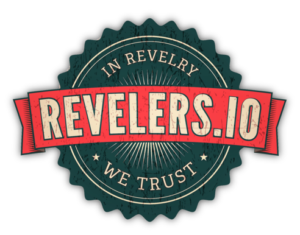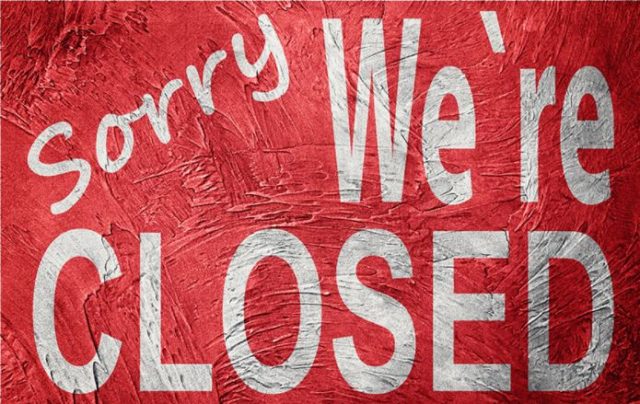Since the mid-2000s, opening a brewery has been a pretty solid business decision. Even as the total number of breweries in the U.S. rapidly climbed toward the highest it’s ever been, the failure rate of new brewing operations was near zero. Entrepreneur Magazine even hinted in 2015 that craft beer was as close to a sure thing as an investor could get.
But in recent years, that aura of invincibility has cracked. Craft beer’s decade of double-digit growth finally ended in 2016, with brewing trade group the Brewers Association reporting that craft beer sales had grown just 6.2 percent—less than half the growth reported a year before. Large legacy brewers seem to have felt the brunt of this slowdown, with Bridgeport Brewing Co., Craft Brew Alliance and Stone all announcing staff reductions within the past six months and Speakeasy Ales & Lagers abruptly shutting down in March and reopening under new ownership in May.
The number of new breweries and brewpubs opening has also been dropping since 2014, while the number of closures has been steadily increasing. A total of 97 craft brewers shut down last year, which represents the most closures in roughly a decade. And while the failure rate of breweries still remains incredibly low relative to other industries, those 97 closures represent an increase from 78 in 2015 and 75 the year before. Meanwhile, new brewery openings have been dropping by an average of 3.3 percent each year since peaking in 2014.
So far, 2017 seems to be indicating a similar trend in closures, and even well-established breweries aren’t immune. Valiant Brewing Co. and Branchline Brewing Co. had both been around for four years before the former closed and the latter filed for bankruptcy; On-the-Tracks Brewery and Offbeat Brewing Co. were both six. San Diego’s stalwart Lightning Brewery had just passed a decade in operation before being put up for sale in December.
So the big question: What is going on? Is increased competition causing these closures? Burdensome regulations? Fickle customers? Is the rent just too damn high? And is it even possible to open and operate a successful brewing business anymore?
To find the answers, we called up the folks who own (or owned, rather) several of the breweries that have shuttered in the past year. Here they are, in their own words.
Alejandro Brown, founder of Big Al Brewing in Seattle, Washington (opened August 2008; closed January 2017)
“Ultimately, what led me to close the doors was flattened growth, stagnant growth. I watched the potential for growth just dry out. From my perspective, there are two things feeding into that: the rotator market and the openings of new breweries.
When we first start 8.5 years ago, I believe we were the 86th brewer in the state. We opened with the model of brewing a new beer every month. We had about 30 or 40 bars that bought a keg every month, but as more breweries opened, we saw that dwindle to a keg every other month, then a keg every quarter. I’m in this camp, but there’s a camp that says every beer you drink has to be a discovery. But now there’s 330 breweries in Washington state now. That makes it tough, as a brewer, to have steady keg sales at bars.
Age is another thing. If your brewery is five years old and you’re hanging in the 2,000- to 6,000-barrel range, you’re probably seeing flat to declining sales at this point. We were producing 2,500 barrels at our peak. The craft beer market as a whole is growing every year, but that growth is being taken up by new breweries. If the new breweries are absorbing all that growth, the rest of us are going to be flat.
I think the key to success in this market is having solid retail, if you can build your business around your retail and you can have your taproom full every night, you’re going to be fine. Or if you’re so big and you’re above the 10,000-barrel mark, you might be flat this year but hopefully you’re well above the black. Or if you’re brand new and you’ve hit the ground running with some solid beers, you’re probably going to be fine because everybody loves the new guy. But the real test will come 24, 36 months down the road.
I think a lot of people start breweries because we love beer, and we’re just going to make beer and people are going to love it. It’s not like that anymore. You have to have a plan.”
(Brown landed on his feet and now Odin Brewing Co., a brewery in Tukwila, Washington.)
Jesse Evans, co-founder and CEO of Ale Syndicate in Chicago, Illinois (founded in 2012 as a gypsy brewery, opened as an onsite facility in 2014; closed December 2016*)
“It’s not the bubble’s fault. There was never a lack of demand for the beer. In fact, we had to cut back on distributors at one point. For us, it was really a production restraint. It’s simple math. Overhead was too high for the amount of beer we could produce in the space we had. There were all kinds of things that were always limiting: pump space, floor space, combined with the big cost of the space, the people we work with, and we were also a shared facility hosting several other breweries. That was something we were really passionate about, but these breweries are taking 20 percent of the space but not paying 20 percent of the overhead. We were basically landlocked in a very expensive building.
I learned in this process that whatever money you’re raising, double it. Maybe triple it. We raised a lot of money, but it would’ve taken twice what we raised to make things work. It’s definitely possible to be successful in the current environment, but it’s all about how much money is in your runway. You have to have enough that you can pick up, set up a new building and get it ready as a brewery.
If I could do it over again, first, I’d hire the same people in a split second. That was the heartbreak: losing the people you work with who are your friends. Second, I would never box myself into a space. If you’re in a warehouse, make sure there are contiguous spaces. Make sure there’s room for growth.
Also, what really worked for us was an amazing advisory board. Having that business leadership to balance out that brewing side. There was a big heart portion that led to decisions that may have gone against the business decisions. I enjoy the process of helping out other brewers, but if a brewery isn’t capitalized enough to survive in its own building, they probably shouldn’t be doing it.
It sounds cheesy, but you gotta know when to fold ‘em. That’s incredibly important. I worked hard to make sure I was holding everything together. We were always working, always crazed, and we should’ve said, ‘Hey, it’s time to take a pause and think about how we can do this differently. But it wasn’t until I was forced to physically separate from the business that I realized that.”
*Evans says Ale Syndicate will be back this year, as the brewery is working on an alternating proprietorship with an as-yet-unnamed Chicago brewery.
Ken Lewis, owner of New Riff Distilling and its brewery offshoot, Ei8ht Ball Brewing in Bellevue, Kentucky (opened November 2013; closed March 2017)
“New Riff is primarily a bourbon distillery company. We opened a microbrewery thinking we might be supplying some wort to the distillery. It grew past that and we were having fun with it. But my perspective is that the only breweries that are either very small or very large can succeed now. The choice was either to go big or be gone, and I chose to be gone and focus on the distillery.
I absolutely think a shakeout is coming. I do not believe that you can be anywhere in the middle in terms of size. You have to be small, local, owner-operator with minimal distribution, or you need to be really big and able to afford the dramatic marketing efforts that are going to be necessary in the upcoming battle for shelf space.
As a former retailer, I clearly see that we’re in a period of what is commonly referred to as SKUmageddon. The dogfight—or the war—for shelf space and attention in a world with 5,000-plus breweries is only going to get more brutal. You’re seeing a slowdown in the growth curve that’s almost nonexistent, and that’s already creating incredible competition for space.
The sizing was wrong. We were a 1500-barrel brewery, which is fine for a small, local brewery, but not for a side project to a larger operation like we were. There’s a very bright future for very small, local breweries. I think it’s a dismal future for anyone else.”
Steve Jones, owner of Pateros Creek Brewing Co. in Fort Collins, Colorado (opened 2011; closed April 2017)
“When we opened in 2011, I think we were the eighth brewery to open in Fort Collins, and we were the first ones to come into our block, to really make it something. There wasn’t any real nightlife or a lot of activities happening here. But our current landlord bought block in 2015 and decided they wanted to change the look of the place. As we went down the road, the rent was never negotiable. It was always going to get higher for us. And we’d always struggled with rent already, so to have it go higher wasn’t an option.
Fort Collins has been going through some transitions as well, the entire city. We’re downtown, and downtown has become too big for its britches in a way. There are a lot of bigger companies moving in paying higher rents that us smaller guys just can’t do. We’ve also had a massive growth in breweries just like every other place.
My original business plan was this way, and I changed it all because of the way things were moving. It was more of a nano-style brewery that was open on the weekends and when I needed a bigger batch I’d contract with the bigger brewers. The taproom would be this small neighborhood taproom where people hang out, drink beer, play darts.
We’re selling all of our equipment in order to erase debts and recapitalize. The way we’re going to move forward is to look for contract brewing and keep our beers around in places that sell well for us and try to expand from there.”
Richard Erickson, managing partner of River Mile 38 Brewing Co. in Cathlamet, Washington (opened 2014; put up for sale March 2017)
“We’re in a unique situation. A lot of breweries started with making a profit in mind, growing, distributing beer and cans and all that. Not this one. A bunch of us got together in this small town, in a small county of 4,000 people. Two of my friends were homebrewers, and I talked to them and 12 other people and said, let’s open a brewery at the marina and see if we can bring tourists in. We wanted it to be a cool place to drink beer, hang out and treat it like a clubhouse.
The brewery’s three years old now, and I’m 74, and another investor is 70, and most of the others are 60, and it’s just killing us. This needs to be owned by younger people.
Now there’s a huge following for this brewery in our local area. We’ve had several prospective buyers. And we’ve told them we won’t sell this brewery if it doesn’t stay in the community.
The brewing business is young, but there’s no young people with money. The guys who have the money are old, but they’re not going to be the ones doing the brewing. We actually have several fathers looking at buying this for their sons.
There’s been a trend change. When we opened, there were 185 breweries in the state of Washington; now there’s over 300. There’s plenty of room to grow in beer sales, because craft beer is still capturing the big beer market. The biggest problem is in your distribution channels, and that this whole trend of what’s new and what’s different has taken over. You used to have permanent handles; those days are gone now, because the young drinkers come in and go, ‘What’s new?’ Even in grocery stores. It’s so crazy right now. What we’ve found is that you need a salesman to go out to these bars and restaurants, and give them a little service. It’s a little more difficult to sell out in the market. But taproom sales are as good as they’ve ever been.
You want it? You can walk in and have all the beer that’s in the tanks. You can even have the $250 that’s in the cash register.”





